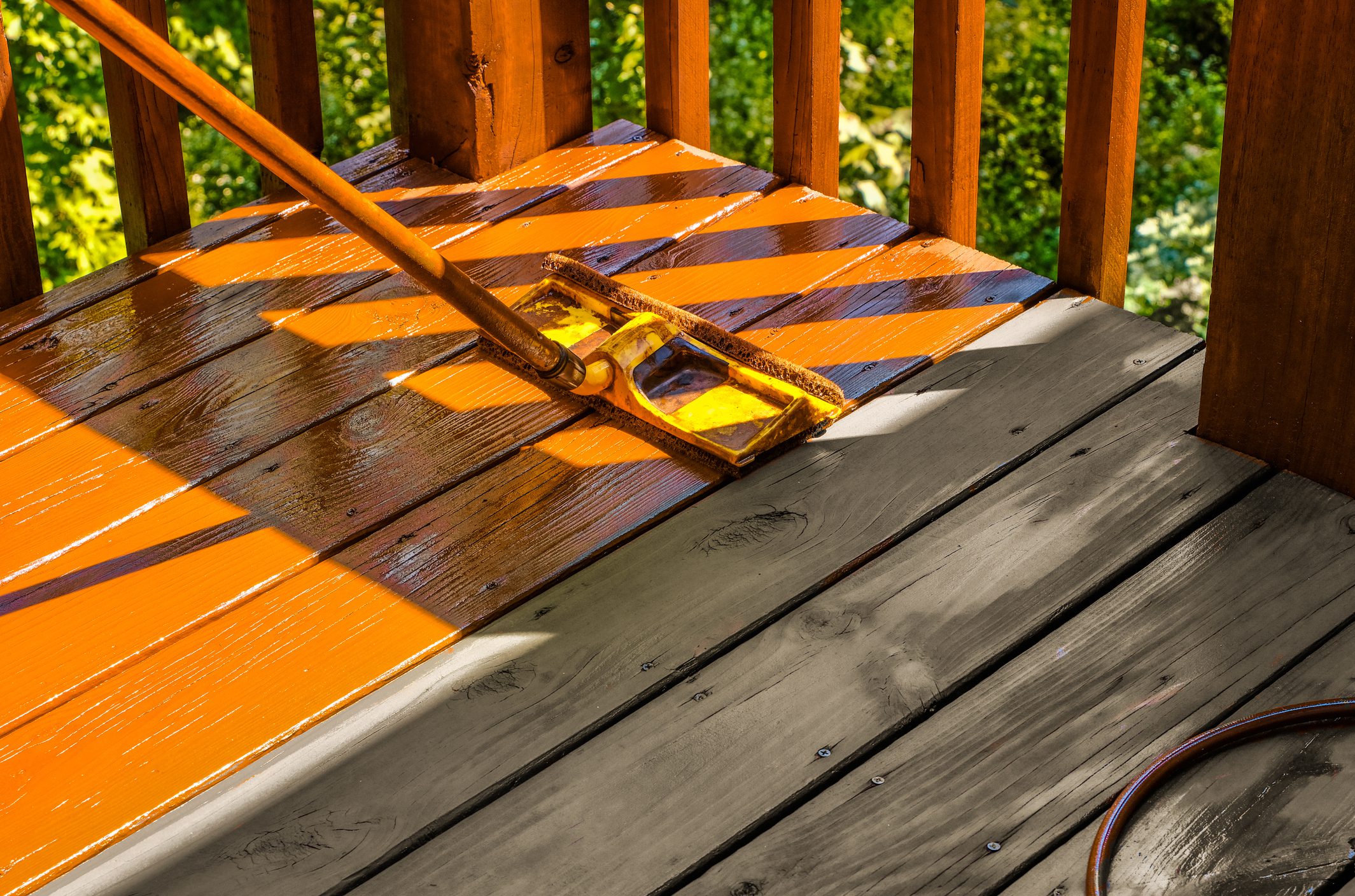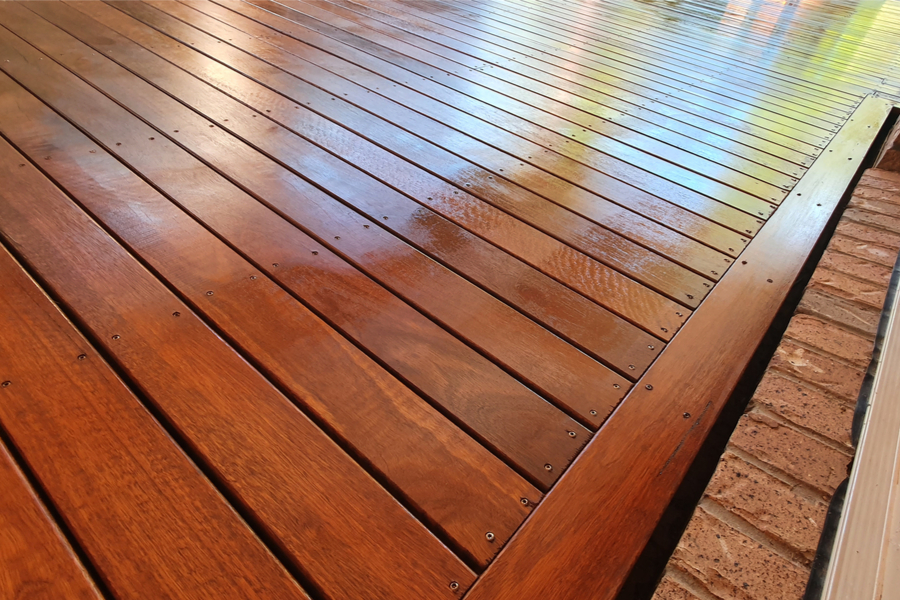Seal the Elegance: Expert Fence Staining and Sealing Providers
Seal the Elegance: Expert Fence Staining and Sealing Providers
Blog Article
Picking the Right Stain for Your Fencing: Tips and Considerations
When it comes to maintaining and improving the appearance of your fencing, selecting the ideal discolor is critical. We will certainly discover the various kinds of fencing discolorations, variables to consider prior to picking a tarnish, tips for preparing your fence for staining, and the differences between oil-based and water-based spots. Furthermore, we will dig into selecting the best discolor color to complement your fencing and boost your exterior room.
Recognizing Various Sorts Of Fencing Stains

On the various other hand, water-based stains are made from acrylic or latex and use a more subtle shade to the wood. They produce a protective movie on the surface area of the timber, stopping wetness from leaking in and shielding versus UV damage. Water-based spots are easier to tidy up and have a quicker drying out time compared to oil-based discolorations. They are also less likely to fade or crack gradually.
Selecting between water-based and oil-based spots relies on numerous variables, consisting of personal choice, the desired look, and the degree of upkeep called for. Oil-based stains are advised for fence high-traffic areas or those regularly subjected to extreme climate conditions. fence staining and sealing. Water-based stains, on the various other hand, are a popular choice for fence suburbs where look and ease of use are essential
Recognizing the differences between oil-based and water-based discolorations assists house owners make an informed choice when selecting the best tarnish for their fence. Considering the certain demands of the fencing, such as its location, exposure to sunshine, and wanted visual, will certainly ensure that the picked discolor gives resilient defense and boosts the overall appeal of the fence.
Factors to Think About Before Picking a Discoloration

An additional element to consider is the kind of timber your fence is made from. Various types of wood take in discolorations differently, resulting in differing degrees of color intensity and longevity. Softwoods like yearn might require more frequent staining compared to woods like cedar or redwood. Additionally, specific woods might be extra susceptible to issues like rot or insect infestation, which might impact the selection of tarnish to safeguard and preserve the fencing.
The climate and weather in your location need to also be taken into account. You may require a stain that offers added security against dampness and UV rays if you live in an area with extreme winters months or high humidity. Likewise, if your fence is revealed to direct sunshine for lengthy periods, a discolor with UV preventions can aid protect against fading and discoloration.
Last but not least, it's crucial to consider your preferred aesthetic. Different discolorations supply numerous shades and surfaces, allowing you to customize the look of your fencing (fence staining and sealing). Consider the total design and style of your building, along with any kind of regional regulations or homeowner organization standards that may dictate the acceptable discolor colors
Tips for Preparing Your Fence for Staining
To prepare your fence for discoloration, beginning by completely cleansing the surface utilizing a moderate detergent and a pressure washer or scrub brush. Cleaning the fence is an important step as it removes dust, grime, and any type of previous layers that might conflict with the discoloration procedure. Begin by wetting the fence with water and after that use a light detergent using a scrub brush or a pressure washer with a low-pressure setup. Scrub the surface gently, paying extra interest to locations with browse this site persistent stains or mold and mildew. Wash the fence extensively with tidy water to remove all traces of cleaning agent.
This action is crucial as staining a moist or wet surface can lead to bad bond and an uneven finish. Guarantee that the fencing is entirely dry before proceeding with the discoloration procedure.
Prior to discoloration, inspect the fencing for any problems, such as loose boards or nails. Repair any kind of problems to guarantee that the fencing is structurally audio. In addition, take into consideration using a timber conditioner or brightener to the surface. This item helps to open up the timber pores, permitting the discolor to permeate better and uniformly.

Comparing Water-Based and oil-based Discolorations
When picking a tarnish for your fence, it is very important to compare the characteristics and advantages of water-based and oil-based spots. Both kinds of stains have their very own benefits and considerations, so it is vital to understand the distinctions between them.
Oil-based stains are known for their sturdiness and resistance to tear and use. Furthermore, oil-based discolorations tend to last longer than water-based stains, making them a popular option for fences.
On the other hand, water-based spots are much more eco-friendly and less complicated to clean up. They have a lower VOC (volatile organic substance) web content, which implies they launch fewer dangerous fumes right into the air. Water-based stains likewise dry much faster, enabling a quicker application and less downtime. Nevertheless, they may not give the exact same degree of defense as oil-based stains, specifically in severe climate condition.
Eventually, the option in between water-based and oil-based spots relies on your specific requirements and choices. Think about elements such as resilience, environmental effect, and simplicity of application when making your choice. Consulting with an expert or looking for referrals from professionals can additionally help ensure that you pick the appropriate tarnish for your fencing.
Picking the Right Stain Color for Your Fencing
The option of a suitable tarnish shade for your fence is a crucial facet of enhancing its aesthetic charm and enhancing the general layout of your outdoor space (deck cleaning). The best stain shade can transform a level, common fence right into a striking centerpiece that adds depth and character to your home
When choosing a tarnish color for your fencing, it is essential to consider the design and design of your home. Natural tones such as neutrals and browns can develop a warm and welcoming look if you have a timeless or standard style home. On the various other hand, if you have a contemporary or contemporary home, you could think about choosing for bold and vibrant colors that make a declaration.
One more factor to take into consideration is the natural environments of your property. If you have a whole lot of plant, a stain shade that matches the all-natural landscape, such as eco-friendlies or crimsons, can develop a unified and cohesive appearance.
In addition, it's worth thinking about the upkeep required for different discolor colors. Lighter colors often tend to reveal dust and put on more quickly, while darker shades can conceal blemishes and need less frequent touch-ups.
Ultimately, the choice of stain shade for your fencing must mirror your individual style and choices - deck staining companies near me. Make the effort to get in touch with and explore different choices with specialists if required, to ensure that you choose the best stain color that improves the appeal and allure of your fencing
Verdict
In final thought, when it pertains to picking the appropriate stain for your fence, it is crucial to recognize the different kinds of spots readily available and consider factors such as durability and preferred appearance. Preparing the fence appropriately before discoloration is crucial for accomplishing ideal outcomes. Additionally, comparing oil-based and water-based discolorations can help establish the finest option for your particular demands. Selecting the ideal discolor color can enhance the overall aesthetic appeals of your fencing.
We will check out the different kinds of fencing discolorations, variables to take into consideration prior to picking a discolor, suggestions for preparing your fence for discoloration, and the differences between oil-based and water-based discolorations.Differentiating in between water-based and oil-based spots is important when understanding various types of fencing discolorations. Water-based discolorations are much easier to clean up and have a much faster drying out time compared to oil-based stains. In addition, oil-based spots tend to last longer than water-based spots, making them a preferred choice for fencings.
In conclusion, when it comes to choosing the appropriate stain for your fencing, it is important to comprehend the various types of stains readily available and think about variables such as sturdiness and wanted appearance.
Report this page